No Stone Unturned: Little Worlds Inside Stream Riffles and Pools
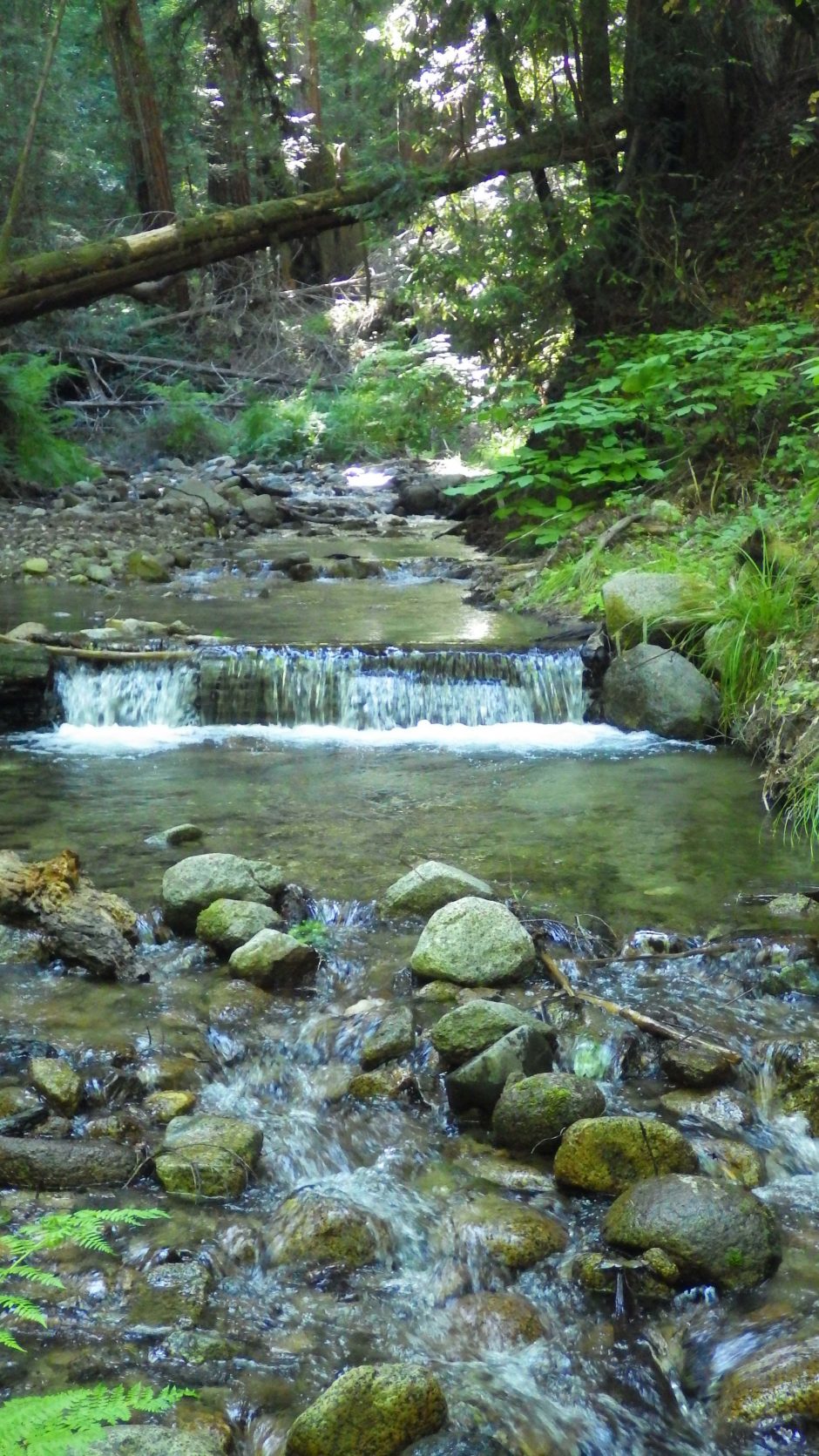
A pool-riffle series in a stream. (Credit: David Herbst, UCSB, via communication)
University of California, Santa Barbara (UCSB) stream ecologist David Herbst, a research scientist with Sierra Nevada Aquatic Research Laboratory (SNARL), is committed to exploring the little worlds inside stream riffles and pools, one overturned stone at a time. Living in these small, dynamic systems are the benthic invertebrates that offer up clear signals about water quality and stream health.
Recent research from Dr. Herbst and his team, published in the journal Hydrobiologia, elucidates the connections between the communities of benthic invertebrates that live in stream riffles and pools, how and why they move as conditions change, and what changing conditions mean for the stream and the rest of the local ecosystem.
Riffles and pools
“Scott Cooper [a colleague at UCSB] and I have always felt that we wanted to be as complete as possible in representing the benthic life in streams,” explains Dr. Herbst. “Using biological indicators of water quality got going back in the early 1990s, and now many state and federal programs do this kind of water quality monitoring. The early work typically just sampled in riffle areas, and that was fine; it seemed like a good way to go because that’s where most of the diversity is. It also made it easier to sample; it’s shallow water, and it made wadeable river sampling possible. But sampling only in riffle areas doesn’t allow you to capture the whole profile.”
From the tiniest stream to the mightiest river, waterways don’t flow in straight lines. The winding and meandering they do may appear to be random, but it serves several critical purposes, allowing stream depth to vary from shallow to deep, and enabling the creation of both riffles over rocky areas with more flow, and pools where there is less flow and sediments accumulate.
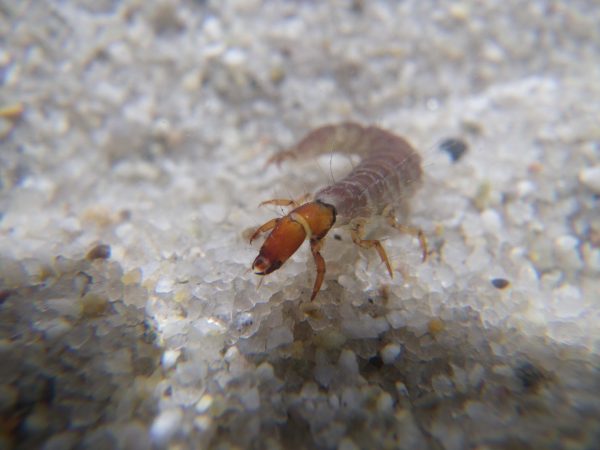
Rhyacophila, a caddisfly. (Credit: David Herbst, UCSB, via communication)
“Generally speaking, the riffles are the places where there’s a greater amount of variety, and they tend to be inhabited by organisms that have larger body sizes and longer life cycles,” details Dr. Herbst. “That includes the EPTs, which are the Ephemoptera, the Plectoptera, and the Trichoptera, or mayflies, stoneflies, and caddisflies. They are the organisms that are probably most commonly eaten by fish, amphibians, and riparian birds, so these and other invertebrates are key to stream ecosystem food webs and the fast turnover and processing of organic matter and algae they consume.”
In the slower and deeper portions of the streams, you will find pools—and very different fauna.
“In the pools, you get more organisms that are tolerant of poor water quality conditions because they’re typically surviving in the sediment, where there’s a lot of decomposition going on, and a lot of organic matter,” Dr. Herbst describes. “Habitats tend to be buried on the bottom of a pool by those sediments, so the organisms that live there typically are living in or at least on those sediments. Therefore, they tend to be tolerant of the low dissolved oxygen conditions which can develop with decomposition. The dominant species in the pools tend to be small-bodied midge flies, the family chironomidae, and they are very diverse.”
According to Dr. Herbst, many stream ecologists considered that the differences between riffles and pools that we already knew about were the extent of what there is to know about the subject—a matter already understood in the literature.
“I think it was thought of as this settled piece of science, although in fact the results from earlier studies were really mixed,” remarks Dr. Herbst. “Especially because prior studies had never been done over a long-term period of time during which information about hydrological changes was gathered, not just on the extent of the habitats themselves, but also on how the inhabitants of those habitats changed, it wasn’t settled science—and that’s really what we captured in this study.”
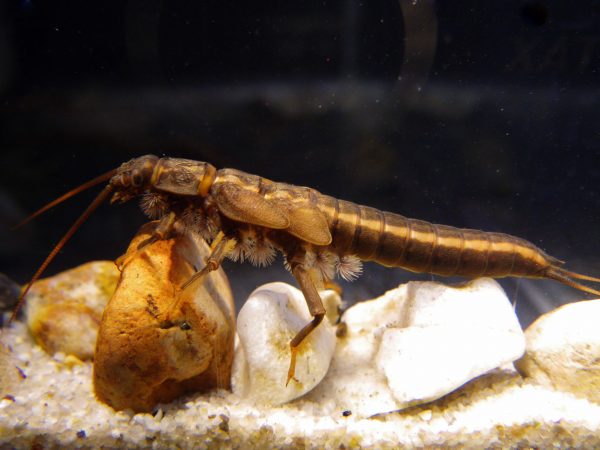
Pteronarcys, a stonefly. (Credit: David Herbst, UCSB, via communication)
Given that nearly half of the species the team studied over time didn’t actually live in the habitats previously thought to house them, the research certainly also indicates how much more we have to learn from the fundamentals of stream environments—and from turning over stones and watching to see who’s there and what happens.
Studying streams to prevent fires
The study originated as part of a U.S. Forest Service study on the Kings River experimental watershed. The Forest Service’s larger aim was to prevent and control fires in the national forests, but their more focused aim for the study was to assess how forest management practices, such as thinning and controlled burns, affect watersheds. The team began to monitor the streams over a period of years, and in the end, the Forest Service was unable to conduct all the forest treatments as planned. This confounded the original study’s purpose but was a boon for the current work.
“Over this 15 year period of doing the studies, conditions hydrologically were changing,” states Dr. Herbst. “We had drought years, average years, and flood years. The drought years, in particular, were really interesting, because they occurred during this record period of drought in the Sierra Nevada. So it ended up being a study of the contrasting conditions between riffles and pools during this period of huge hydrologic variation.”
This highlights one of the benefits of long-term scientific monitoring in an area that is in many ways underappreciated.
“A lot of the funding agencies look down their noses at science that’s called ‘monitoring,’ because there’s not a particular experimental hypothesis, and you’re not manipulating things like experimental scientists do,” comments Dr. Herbst. “But these long-term studies allow so much to emerge in a natural, non-manipulative way. Being able to capture flood years and severe drought years in this study made a huge difference, and I think for any kind of monitoring study there will always be wild cards that get thrown in. If you’re there to study them when they happen, you gain some insight you might not otherwise have ever been able to gain, through a lot of experimental manipulations you couldn’t replicate. We couldn’t have simulated the kinds of droughts that we saw in the Sierra Nevada, not with the realism of the large scale.”
Monitoring reveals unexpected shifts
To monitor conditions through those years, the team used standard protocols, with some modifications for sampling in pools.
“We use a sampling net that we call a D net; it’s in the shape of a D, and the flat part of the D is what goes down on the stream bottom,” explains Dr. Herbst. “It’s attached to a pole, and you set it down on the stream bottom below the one square foot area that you want to sample. In a riffle, you’d go in by hand and turn over the rocks that are in that square foot area, rub them by hand, dig around a little bit, and as you move the rocks, the current sweeps those organisms that are dislodged from them into the net.”
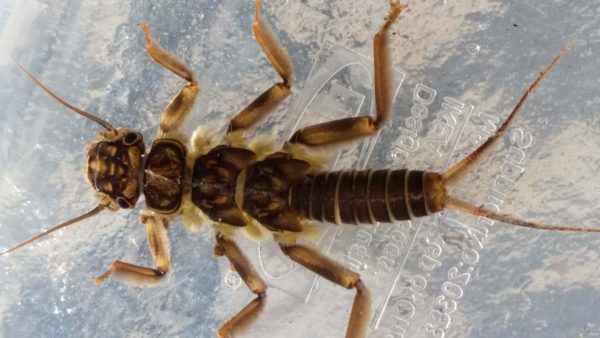
Doroneuria, a stonefly. (Credit: David Herbst, UCSB, via communication)
The team then collected all samples from each area in buckets, filtered each bucket out, and preserved specimens in alcohol for use in the lab.
“In pools you can do pretty much the same thing, except that because the water’s moving a little bit more slowly in most places, especially as it gets deep, you kind of have to use your hand a little bit to give the current a little assist so that it’s easy to collect the sample,” adds Dr. Herbst.
The years of data revealed a flexibility between riffles and pools that the team didn’t expect.
“We found in this study that riffles and pools are really dynamic; at the very lowest flows, everything sort of becomes a pool, and at the very highest flows, everything sort of becomes a riffle,” concludes Dr. Herbst. “That’s because when the current is moving very slowly through a channel there’s not much power to lift sediment off the stream bottom, so it tends to be a depositional environment, in both the riffles and the pools. On the other hand, at very high flows, that depositional environment sort of disappears.”
It is actually transitional zones in the stream that enable this much flexibility between pools and riffles.
“If you ever go to a stream channel, the shallow rocky areas and the deeper pool areas both look like they’re pretty fixed in place; it looks like it would take a really big event to reconfigure that basic structure of the channel,” comments Dr. Herbst. “Actually, in addition to the riffles and pools, there are transitional zones, areas that are not quite shallow and rocky enough to be a riffle, and not quite deep and depositional enough to be a pool; there are transitions between those two. It’s those transitional zones that are actually either becoming more pool-like at the low flows or more riffle-like at the highest flows.”
The team also observed a surprising amount of dynamism among fauna connected to stream flow.
“It’s really dynamic: the whole environment is changing as the flow regime changes, and not only is the habitat extent and percent composition changing, the fauna that inhabit these areas is also responding to that,” Dr. Herbst describes. “You get a lot more depositional type pool organisms inhabiting the riffles during the low drought flows, for example, and during high flows, you find more riffle critters in pools.”
However, even this summary is deceptively simple. Because floods are such short term events compared to droughts, they cause less dramatic changes.
“Flood effects and high flow effects are short-lived, just as the floods themselves are,” remarks Dr. Herbst. “They will cause scouring and the removal of organisms from the stream bottom in both riffles and pools. But our geomorphological understanding of how these very high flows form tells us that even under very high flow conditions, the forces that create pools are still in operation. So you do get that short term flushing, but then things recover pretty quickly and they go back to the depositional erosional type environments.”
Drought, on the other hand, develops slowly and is prolonged. It is a stressor that is very different and much more severe than the stress of a short-term high flow event.
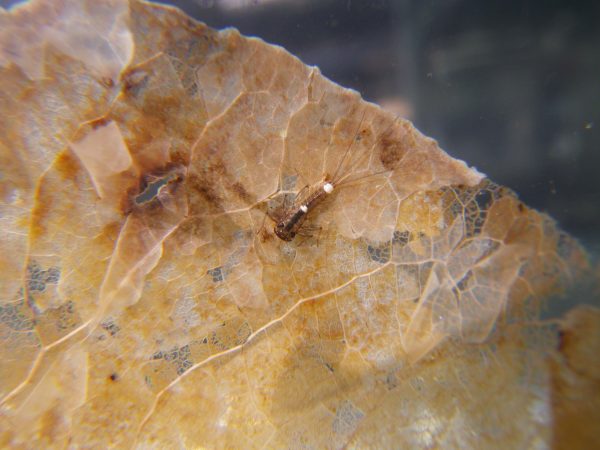
Cinygmula, a mayfly. (Credit: David Herbst, UCSB, via communication)
“Now that we see how those habitats can change over time, especially when they’re stressed by drought, it’s a really different biological assemblage of species that sets up under those varying conditions,” remarks Dr. Herbst. “That was a revelation I think that came from having supposed that we already understood something when we really didn’t.”
Appreciating benthic health
For the most part, benthic creatures are the less-celebrated creatures of the water, even though they compose the foundation of stream health.
“People love to go to rivers and streams, but there’s not a whole lot of people that actually start poking around in the water and turning rocks over,” Dr. Herbst says, joking yet earnest. “Those are kindred spirits of stream ecologists, other people who poke around in streams like that, looking for what lives down there. They’re so small, and they don’t have that sex appeal of the charismatic megafauna like sharks, these insects in streams. In your hand by a stream it doesn’t look like much, but under a microscope, it’s pretty impressive.”
This brings us to the issue of river “management” and the straightening of streams—a practice which wreaks havoc on benthic communities, and gradually, over time, the other communities that depend on this foundation.
“One of the more common practices we implement when trying to manage the landscape is to straighten out that stream,” cautions Dr. Herbst. “These huge channelization projects and flood control projects and levees and dams are all wonders of our ability to engineer nature, but what a huge cost there is in terms of wild nature when we do that. I think that’s one of the greatest threats to the to the ecological variety and diversity of streams, when we remove that meandering, undulating natural snakiness, that natural sinuosity that rivers and streams have, and we thereby remove that habitat variety that is so evidently important in promoting this variety and diversity of life.”
Beyond merely seeing value in biodiversity, benthic communities play important roles for humans, if we are willing to see them. Even if we aren’t, we rely on their ecological services.
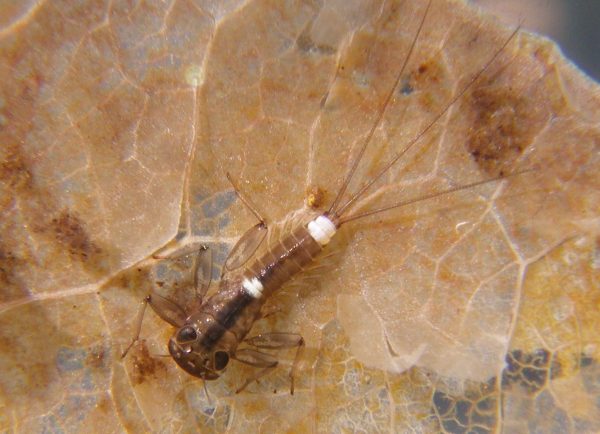
Cinygmula, a mayfly, close up. (Credit: David Herbst, UCSB, via communication)
“These organisms can certainly be regarded as canaries in the coal mine; they tell us a lot about how favorable or not the environment is for aquatic life, and thereby how much ecological service is being delivered by those stream ecosystems,” Dr. Herbst says. “When a stream is polluted, it’s no longer delivering the same kind of ecological services, as an important foraging food resource to fish, amphibians, birds, and indeed people. The bugs that usually act like the little garbage collectors in the stream are no longer able to collect all the garbage that’s accumulating, and the water quality declines.”
In the end, this research showcases the complexity and dynamism that’s present at the bottom of streams, and what it does for the critters who live there, not to mention the humans who live everywhere else.
“The big picture is that these habitats truly are the foundations of the stream, and these foundational features deserve more attention,” remarks Dr. Herbst. “This study spotlights something that I hope will become part of the textbook knowledge of streams. It’s not just a one-off study; it allows us to understand a fundamental part of streams that we didn’t appreciate as fully as I think we do now.”
Dr. Herbst adds, “If we’re going to do proper conservation, we need to leave no stone unturned.”
Top image: A pool-riffle series in a stream. (Credit: David Herbst, UCSB, via communication)




0 comments